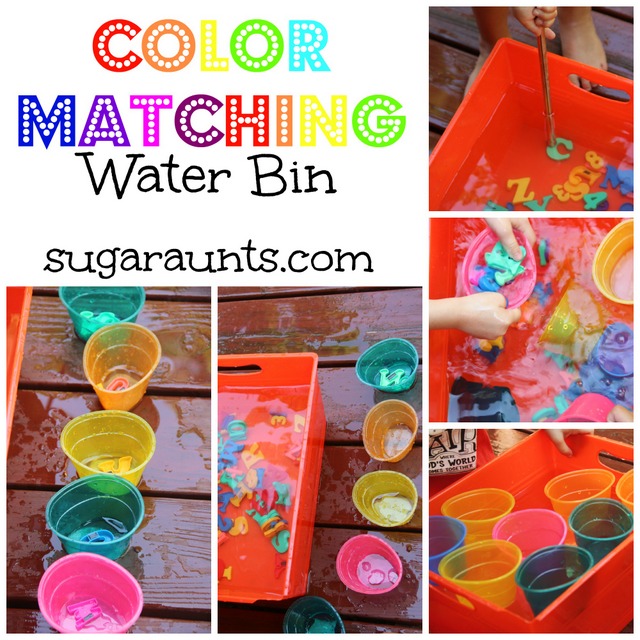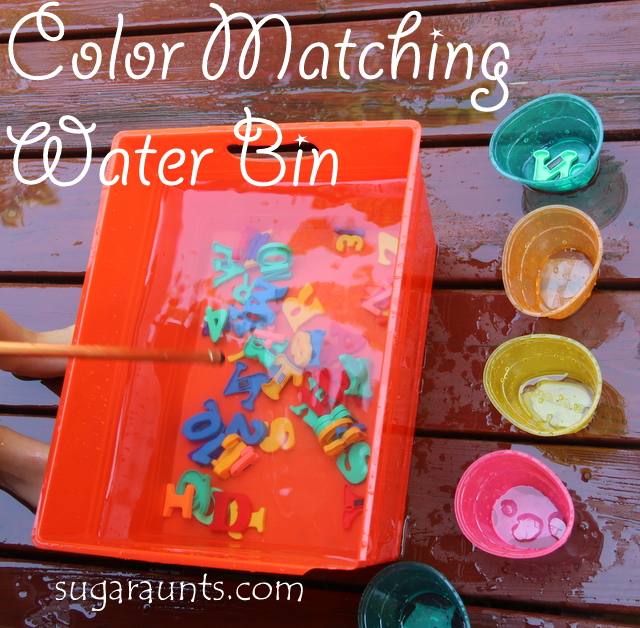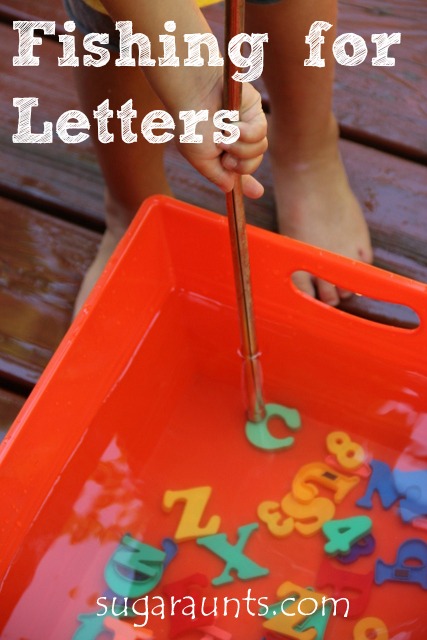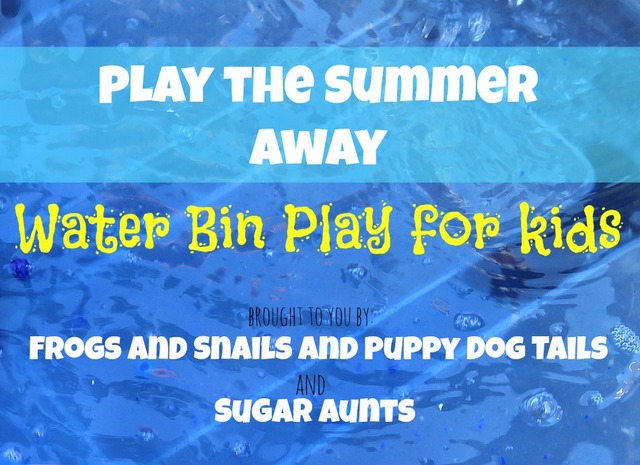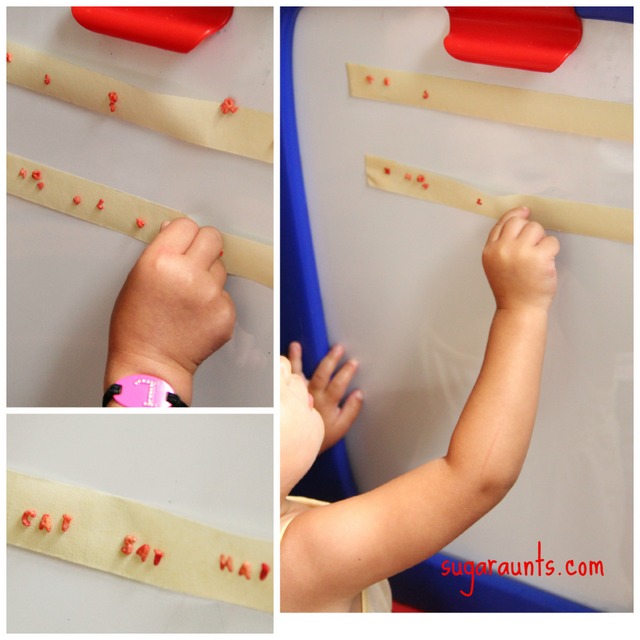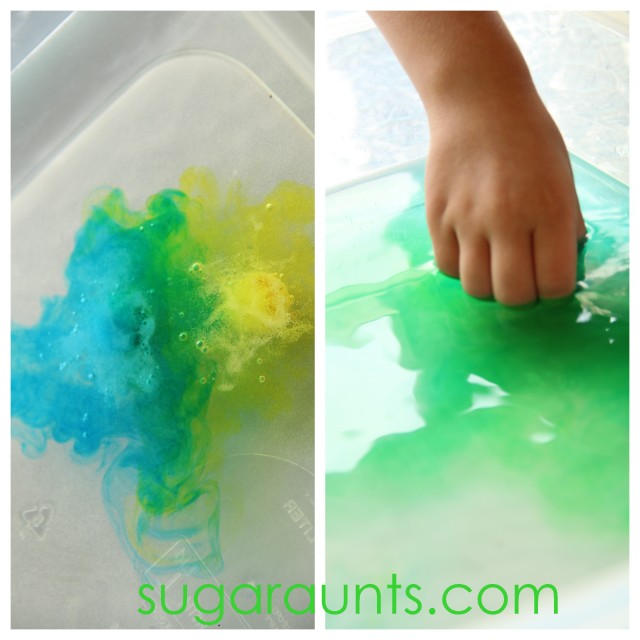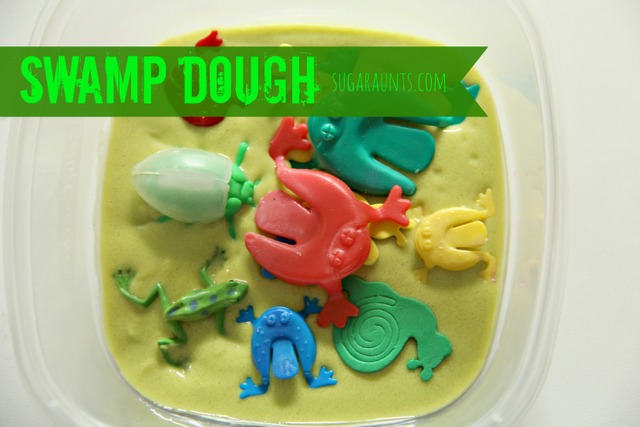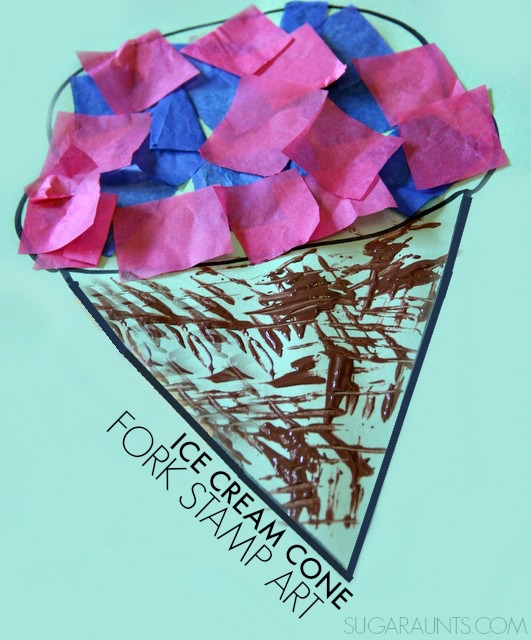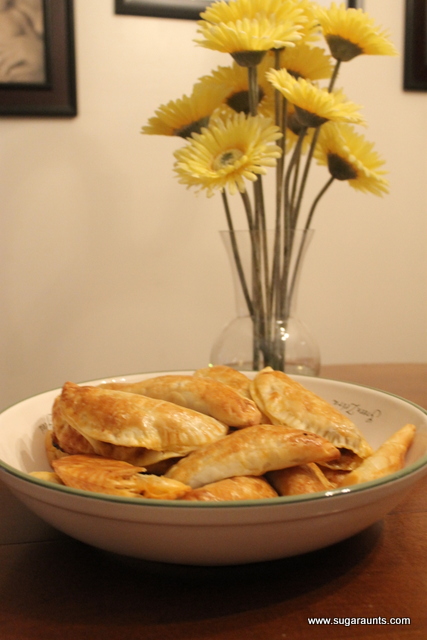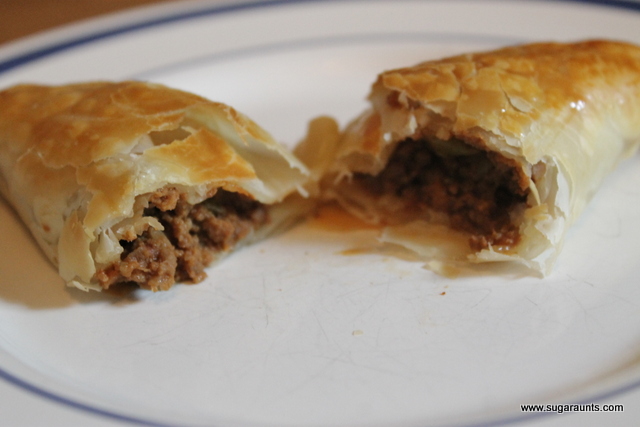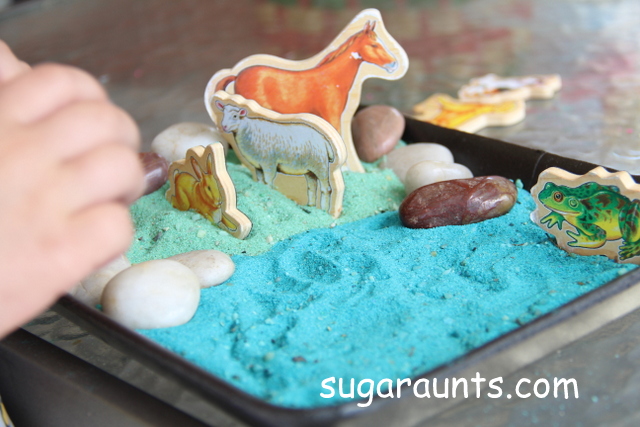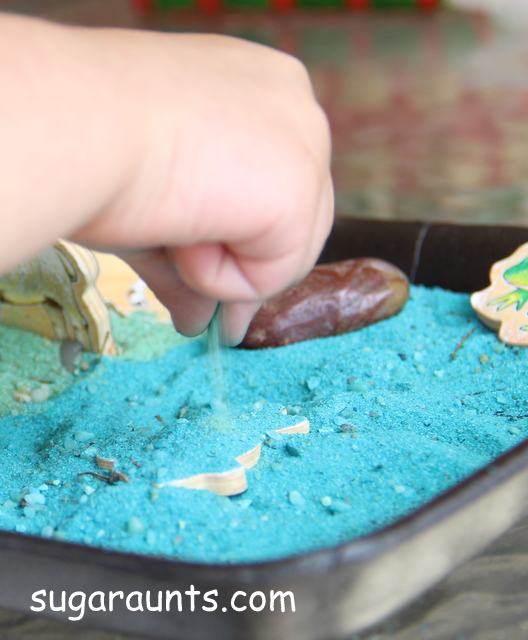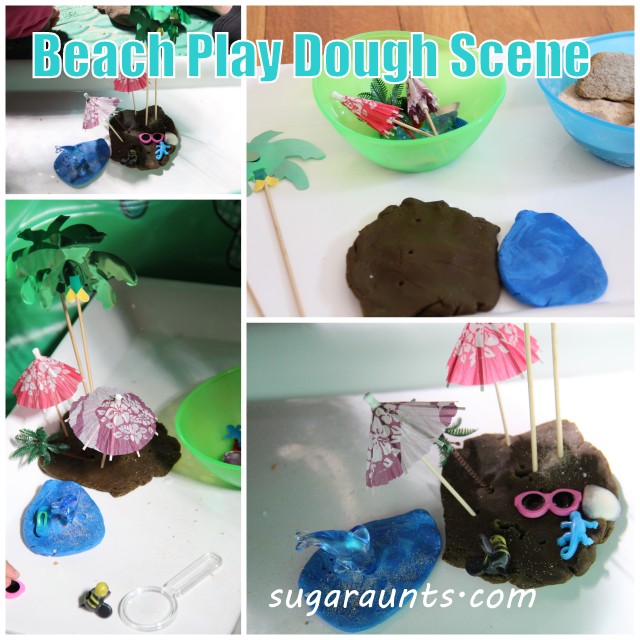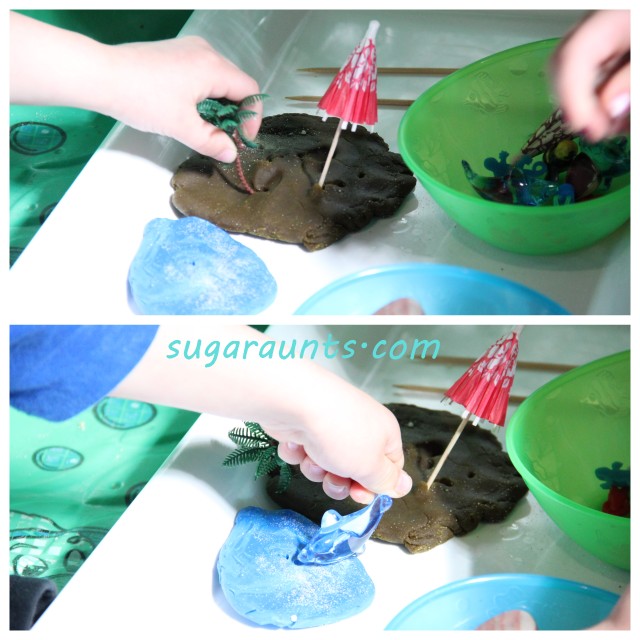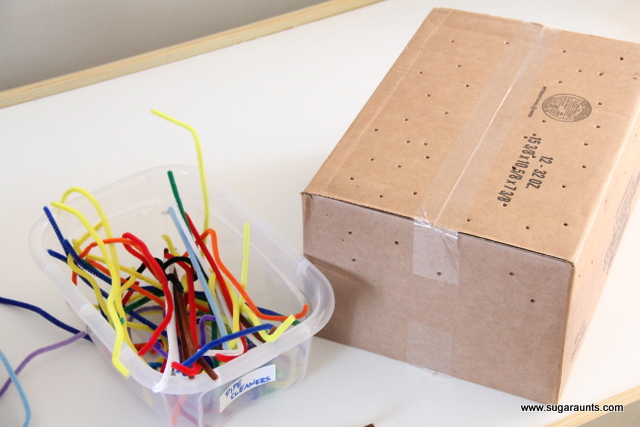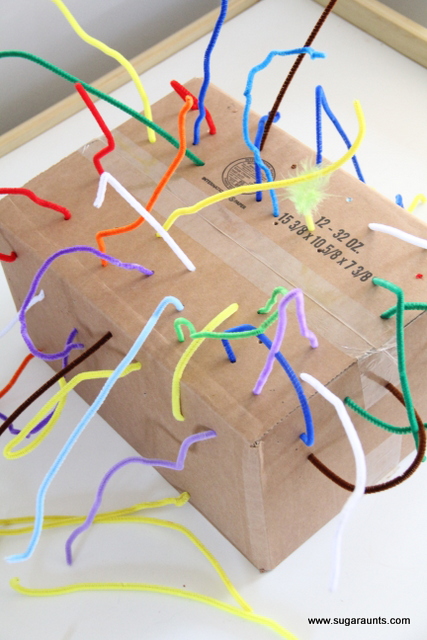eye hand coordination
Learning with Dyed Alphabet Pasta
Grab a box of alphabet noodles for a fun multisensory learning activity that builds skills in many areas. We used letters pasta to create a sensory bin that incorporates fine motor skills and a letter learning activity.
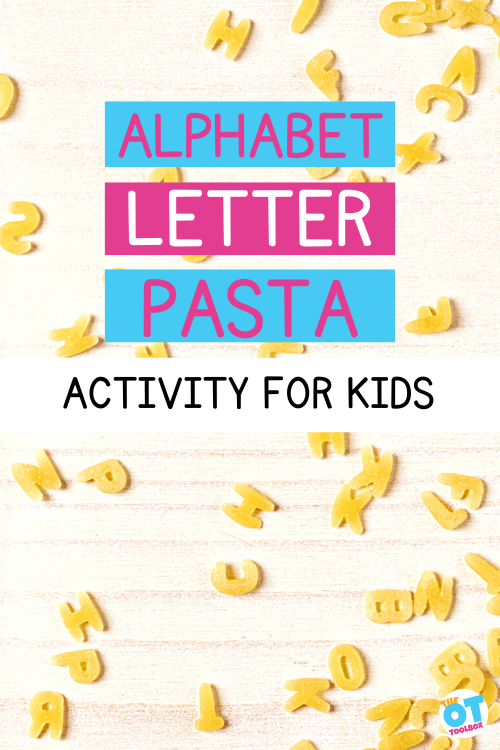

Alphabet Noodles
You might remember eating alphabet noodles as a child in soup. But if you have a box of letter noodles on hand, it’s easy to create a sensory play activity that builds skills.
This easy dyed pasta activity combines learning with fine motor development. From the scooping to the neat pincer grasp activity, this is a great way to build many skills! Younger children can use scoops and spoons to develop coordination needed to scoop and pour while gaining exposure to letters. What a fun way to build so many areas!
How to dye alphabet Pasta
Alphabet letter pasta can be used in many ways! How do you use this sensory activity to learn and play?
Working on fine motor skills, visual perception, visual motor skills, sensory tolerance, handwriting, or scissor skills? Our Fine Motor Kits cover all of these areas and more.
Check out the seasonal Fine Motor Kits that kids love:


















Or, grab one of our themed Fine Motor Kits to target skills with fun themes:
- Frogs Fine Motor Kit
- Unicorns Fine Motor Kit
- Vehicles Fine Motor Kit
- Apple Fine Motor Kit
- Back to School Kit
- Sports Fine Motor Kit
- Outer Space Fine Motor Kit
- Fairytale Fine Motor Kit
- Plus more in our shop!
Want access to all of these kits…and more being added each month? Join The OT Toolbox Member’s Club!
Swamp Water Bin Sensory Play
Water Bin Play Series
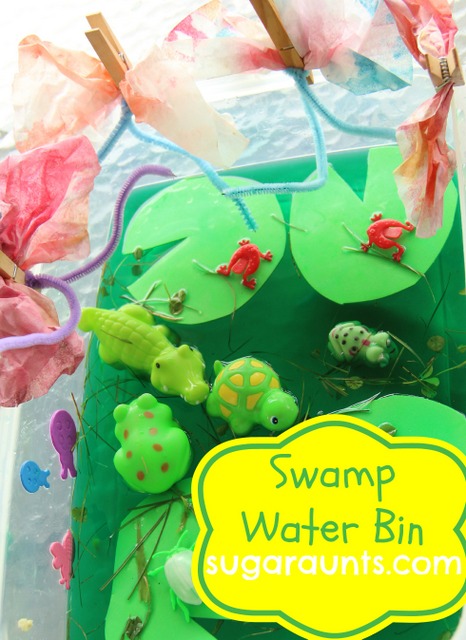

Affiliate ads are added for your convenience.
Fork Painting Ice Cream Craft for Kids
July is National Ice Cream Month!
Ice Cream Cone Craft
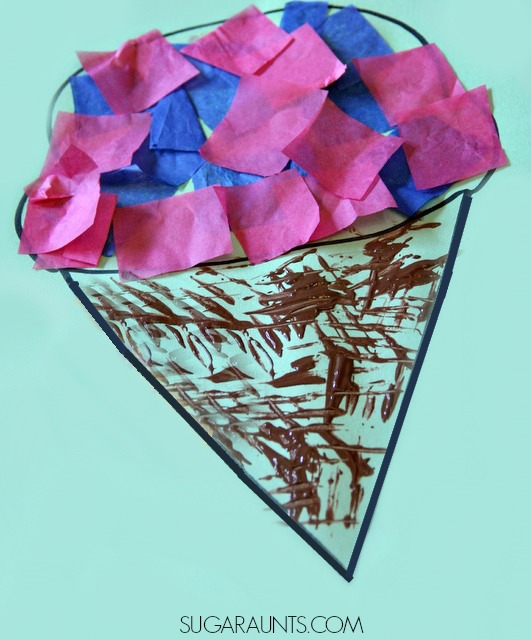

Toddler Red, White, and Blue Easel Art
Easy Patriotic Activity for the 4th of July.
Taco Empanadas
This taco empanadas recipe is a quick and delicious meal you can make using leftover ground beef, chicken, or ground turkey. Leftover taco meat is perfect for making taco empanadas! This Mexican empanada dish is a delicious one for all ages. If you are looking for a cooking with kids recipe that the whole family will love, this one is it!
Taco Empanadas
This recipe is just too easy not to share with you…and the best part is our kids love it (and love to help make it)! I made these one day last week for a play-date and the kids thought they were pretty neat.
You can improvise the filling with anything you think would be good…I have made them with chicken, ground turkey, and the traditional beef empanadas.
Taco Empanadas Ingredients
- Mexican pastry shells
- 1-1.5lb ground beef
- One package Taco Mix
- 6oz salsa of your choice
- Start out with these pastry shells, I get them in the local Mexican store in the refrigerator section. I usually pick up several packages and keep some in the freezer.
4. Fill the shells with the meat mixture and fold over.
5. Use a fork to press the shells together.
6. Wisk an egg and lightly paint the shells with the egg. My four year old daughter loves helping with this part.
7. Using the fork while pressing into the dough is great for her little fingers.
8. Bake in oven at 375 degrees F for approximately 20 minutes or until golden brown. Delicious!
Pair this recipe with other easy dishes:
beach small world play
Many years ago, we made a creative ocean and beach small world play activity and it was a Summer hit! Whether you are looking for activities to keep the kids busy at home through hands-on, sensory play, OR if you need Summer occupational therapy activities to use in skill-building, a beach small world is a fun way to play!
Beach Small World Play
Creating a beach small world using miniature animal forms and homemade colored sand can be a fantastic sensory activity for children.
It doesn’t take much to create a small world, and the benefits are huge:
- Imagination and Creativity: Small world play encourages children to use their imagination and create their own narratives and scenarios. They can invent stories, develop characters, and build unique worlds, fostering their creative thinking skills.
- Language Development: Small world play often involves storytelling and dialogue, which helps children enhance their vocabulary, expressive language skills, and communication abilities. They can practice describing objects, expressing emotions, and engaging in role-play, leading to improved language development.
- Problem-Solving and Critical Thinking: When engaging in small world play, children encounter various challenges and obstacles. They learn to think critically, problem-solve, and find solutions to overcome these challenges, fostering their cognitive skills.
- Fine Motor Skills: Manipulating and arranging small objects in a small world setting requires precise hand-eye coordination, dexterity, and fine motor skills. Children practice grasping, pinching, and manipulating objects, which can enhance their fine motor abilities.
- Social Skills and Cooperation: Small world play often involves collaboration and cooperation when children engage in shared storytelling or role-playing scenarios. They learn to take turns, negotiate roles, and collaborate with others, promoting social skills and teamwork.
- Emotional Expression: Small world play provides a safe and controlled environment for children to express their emotions and explore different feelings through their play narratives. They can process and make sense of complex emotions, develop empathy, and practice emotional regulation.
- Sensory Stimulation: Small world play often incorporates sensory elements, such as sand, water, or different textures. Engaging with these sensory materials stimulates children’s senses, promotes sensory exploration, and contributes to their sensory development.
- Knowledge Acquisition: Small world play can be a great tool for learning about different concepts and subjects. Children can explore nature, geography, history, and various themes as they create their miniature worlds, leading to knowledge acquisition in a fun and engaging way.
How to make a beach small world
With a bit of imagination, parents can transform a small tray or container into a mini seaside paradise.
You’ll need to first gather just a few items to make a beach small world activity:
- Animal figures: seagulls, crabs, and dolphins, fish, or other animals
- Tray or Container: Select a shallow tray or container that is large enough to hold the materials and provide a play space for your child. It can be a plastic tray, a wooden box, or any other suitable container.
- Sand: Use play sand or kinetic sand to create the beach or ocean floor. You can also dye the sand using food coloring like we did to make our homemade colored sand
- Water: Incorporate a small amount of water into your small world setup to represent the ocean. You can use a separate container for the water or create a section within the main tray for a shoreline or shallow water area.
- Rocks and Shells: Gather some small rocks and seashells to create a more realistic beach or coastal environment. You can collect these from a local beach or purchase decorative ones from a craft store.
- Plants and Foliage: Consider adding some greenery or beach vegetation to enhance the sensory setup. You can use fake or dried plants, small artificial trees, or even real seaweed (if available and safe to use).
- Tools and Utensils: Provide some child-friendly tools and utensils for scooping, digging, and creating patterns in the sand. Small shovels, spoons, sieves, and rakes can be used to enhance the sensory experience and encourage fine motor skills.
- Optional Accessories: Depending on your preference and the space available, you can include additional accessories like toy boats, small beach umbrellas, mini beach chairs, or even a small plastic container to mimic a tidal pool.
As children manipulate the sand, feeling its texture and watching it flow through their fingers, they enhance their sensory development.
We used our DIY Colored Sand to do a little pretend play one rainy afternoon.
We used our refrigerator farm animal magnets and had fun with our pretend lake. Once you know how to make colored sand, you can use it for so many sensory bin activities!


Beach Play Dough
Invitation to Create a Beach
Imagination Play
Pretend Play
Fine Motor Dexterity
Tripod Grasp to pinch and sprinkle the sand
Index Isolation and Tripod Grasp to press the little items into the play dough
Pipe Cleaner Fine Motor Activity With a Cardboard Box
This pipe cleaner fine motor activity is a fun one that we used for many years to target fine motor skills like dexterity, pincer grasp, hand strength, and more. Plus, this pipe cleaner activity is great for toddlers. But, kids of all ages love this activity! Let’s break it down…
Pipe Cleaner Fine Motor Activity
This fine motor pipe cleaner activity is very simple to set up. You need just two items:
- Pipe cleaners cut into half or one thirds
- A cardboard box
To set up the activity, first cut the pipe cleaners into smaller sections. For younger children use longer lengths of pipe cleaners and for older kids, target more precise fine motor skills but cutting smaller sections.
Then, use a screwdriver and poke holes all over the cardboard box.
You’ll want to poke holes on the top of the box, but also on the sides of the box. A larger box is best for this activity, because the holes on the sides of the box encourages a wider range of motion, including wrist extension.
You’ll also see more diverse movements when a larger cardboard box is used: bilateral coordination, visual scanning, crossing midline, and more.
Another pipe cleaner fine motor activity to try is dropping pipe cleaners into a bottle. Toddlers love that activity, too!
Working on fine motor skills, visual perception, visual motor skills, sensory tolerance, handwriting, or scissor skills? Our Fine Motor Kits cover all of these areas and more.
Check out the seasonal Fine Motor Kits that kids love:


















Or, grab one of our themed Fine Motor Kits to target skills with fun themes:
- Frogs Fine Motor Kit
- Unicorns Fine Motor Kit
- Vehicles Fine Motor Kit
- Apple Fine Motor Kit
- Back to School Kit
- Sports Fine Motor Kit
- Outer Space Fine Motor Kit
- Fairytale Fine Motor Kit
- Plus more in our shop!
Want access to all of these kits…and more being added each month? Join The OT Toolbox Member’s Club!


Colleen Beck, OTR/L has been an occupational therapist since 2000, working in school-based, hand therapy, outpatient peds, EI, and SNF. Colleen created The OT Toolbox to inspire therapists, teachers, and parents with easy and fun tools to help children thrive. Read her story about going from an OT making $3/hour (after paying for kids’ childcare) to a full-time OT resource creator for millions of readers. Want to collaborate? Send an email to contact@theottoolbox.com.


